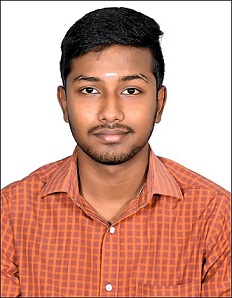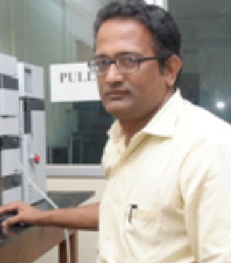
Clothing is one of the basic necessities of human life. Thus, it comes as no surprise that the textile industry is a trillion-dollar-a-year enterprise. A considerable portion estimated at $ 250 billion is contributed by leather and textile dye industries. Unfortunately, these are also the greatest contributors towards pollution of rivers, soil and other water bodies. The discharge of these effluents into rivers and lakes severely damages their ecosystems, causes fatality to aquatic life and hinders plant growth. Thus, efforts are made to treat leather and dyeing unit discharges to free them of pollutants to a maximal extent before discharging them into water bodies or recycling them.
Treatment of dye effluents and tannery effluents using advanced processes requires considerable skilled labour and money. These treatment methods are not economically viable in the many dyeing and tanning units that are located in rural India. Thus, cost effective methods to treat the effluents from these units would be immensely beneficial to sustain the economy and livelihood in these areas.
Coagulation is an easily understood and affordable pre-treatment step that may be readily implemented to handle effluents from the dye and tannery industries. It has been seen that coagulants used for treatment of tannery industry effluents results in about 40 percent reduction in chemical oxygen demand, and 60 percent reduction in colour and suspended solids. New coagulants like Poly Aluminium Chloride (PACl) are also being used and are found to have better efficacy and lower impact on the pH of the solution.
The use of sodium hypochlorite, a powerful oxidant and disinfectant, was investigated. Direct sodium hypochlorite addition to the tannery and dyeing units effluents led to significant COD and colour reduction but necessitated considerable chemical usage which may prove to be expensive in the field. Sodium hypochlorite, however, could substantially reduce the volume of sludge generated in the coagulation pre-treatment step. As a novelty in this work, the resulting clear solution after substantial sludge dissolution was not disposed, but instead mixed with the pretreated clear solution produced from the coagulant process. The remaining sodium hypochlorite present in the dissolved sludge solution could bring down the COD and colour of the pretreated solution considerably, thereby reducing the load in subsequent downstream processing.
For further removal of residual chemical oxygen demand, biological oxygen demand, and colour, the widely used adsorption process involving activated carbon was adopted. Adsorption is a simple and effective technique to remove pollutants. It is also cost effective, and can readily be implemented in the field. It is to be noted that the prior mixing of the clear solution from the sludge dissolution with the pretreated solution helped in running the adsorbent bed for a longer duration. A simple method, without involving sophisticated analytical instrument, was proposed to identify the saturation of the adsorbent bed after treating the effluent solutions for some time.
The lack of simple treatment steps in tannery belts and small scale dyeing units in rural parts, may lead to direct discharge of these effluents into water bodies and sewers thereby choking the sewage treatment plants. The Unified Treated Process (UTP) as proposed above may effectively handle both tannery and dye effluents in small decentralized individual units, prior to their discharge for further treatment. The operation of the UTP is also simple and may be routinely implemented in rural areas. Further, the coagulants and adsorbents may be sourced from local vegetation and synthesized by the rural populace, increasing the viability of the UTP even further.



Thus, in this study, the authors of this paper, comprising of Mr. Anush Venkataraman and Mr. Lokesh Babu, from the Department of Chemical Engineering, Rajalakshmi Engineering College, Chennai, and Prof. Kannan Aravamudan, from the Department of Chemical Engineering, Indian Institute of Technology Madras, Chennai, have come up with an efficient and cost effective method to treat tannery and textile dye industry effluents. In depth study was done to understand the effectiveness of simple methods to treat effluents like coagulation, adsorption, and chlorination. Readily available chemicals such as PACl and sodium hypochlorite have been used. The overall UTP proposed in this study removed about 97 percent chemical oxygen demand in tannery and dye industry effluents. Such simple treatments could greatly help the rural population to lead a normal life and also be free from industry effluents.
Article by Akshay Anantharaman
Here is the original link to the paper:
https://www.sciencedirect.com/science/article/abs/pii/S0304389421020276?via%3Dihub









